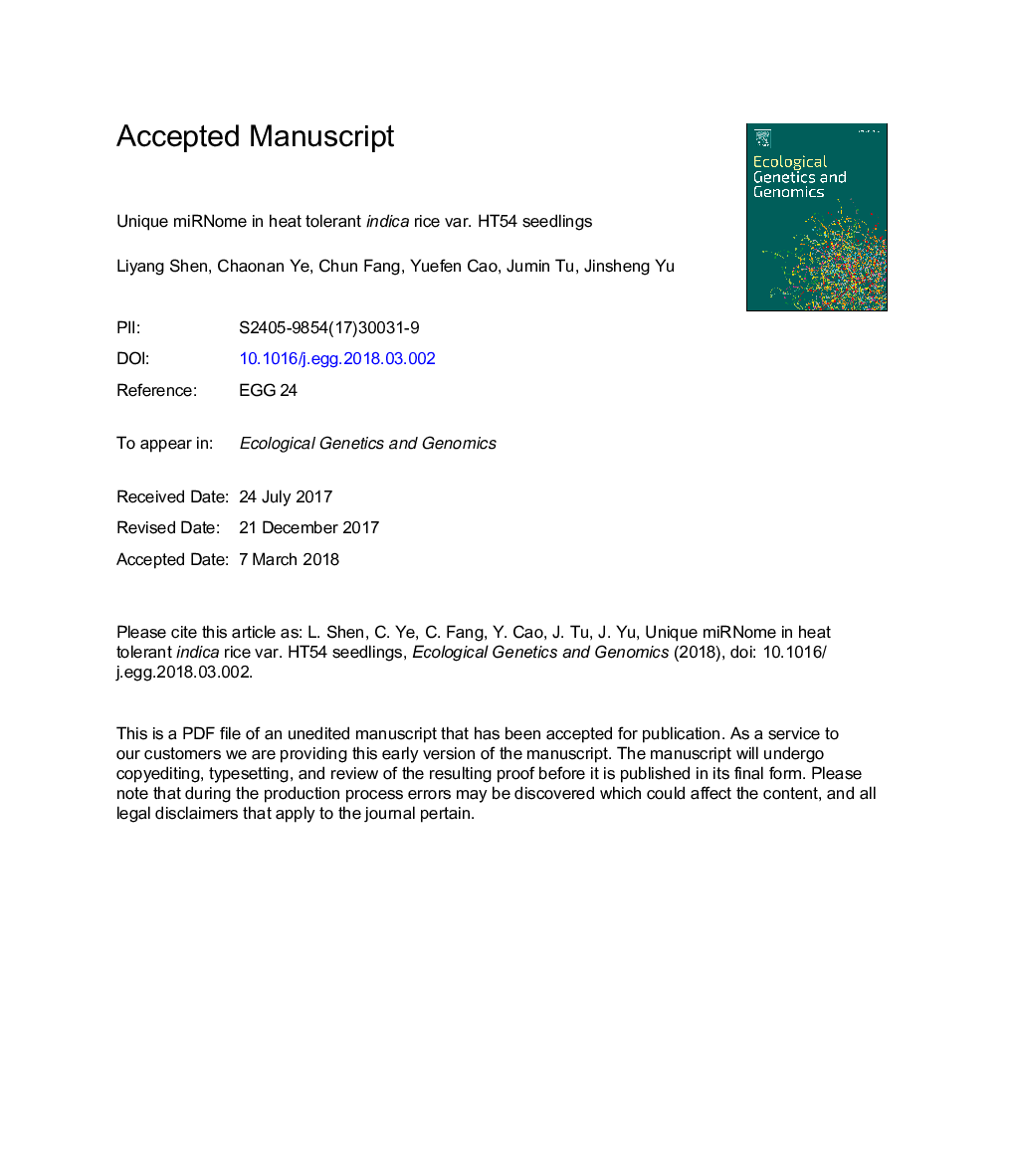| Article ID | Journal | Published Year | Pages | File Type |
|---|---|---|---|---|
| 8644123 | Ecological Genetics and Genomics | 2018 | 37 Pages |
Abstract
As the most important major food crop, rice (Oryza sativa) often suffers from heat stress in tropical and subtropical regions. Thus, to investigate the mechanisms of responses and tolerance to heat stress (HS) at the miRNA level is important for breeding new rice varieties with HS tolerance. In this study, six miRNA libraries (with duplicates for each of the 0â¯h, 12â¯h and 24â¯h HS treatment) for HT54, an indica heat tolerant line, were sequenced. Based on this, a set of HS-responsive miRNAs and their target genes were identified by using the next-generation sequencing (NGS) and degradome sequencing (DS). A total of 419 conserved and 77 novel miRNAs were identified, of which 39 conserved and 2 novel miRNAs were found to be significantly differentially expressed (pâ¯<â¯0.05). As the most up-regulated miRNA, the expression of miR396 family members were verified by qRT-PCR. In addition, one down-regulated miR162b and one novel miRNA (pc-5p-93188_29) were experimentally validated. These results inferred that these loci were responsive to HS. Moreover, a total of 1364 target transcripts were identified for 114 conserved miRNAs and a total of 65 were identified for 22 novel miRNA families. GO and pathway enrichment analyses showed that these genes most likely play vital roles in rice HS tolerance. Taken together, a set of HS-responsive conserved and novel miRNAs were firstly characterized and identified in rice seedlings, which would lay a solid foundation for clarifying rice HS response and tolerance mechanisms.
Related Topics
Life Sciences
Biochemistry, Genetics and Molecular Biology
Genetics
Authors
Yunzheng Miao, Chaonan Ye, Liyang Shen, Yuefen Cao, Jumin Tu, Jinsheng Yu,
